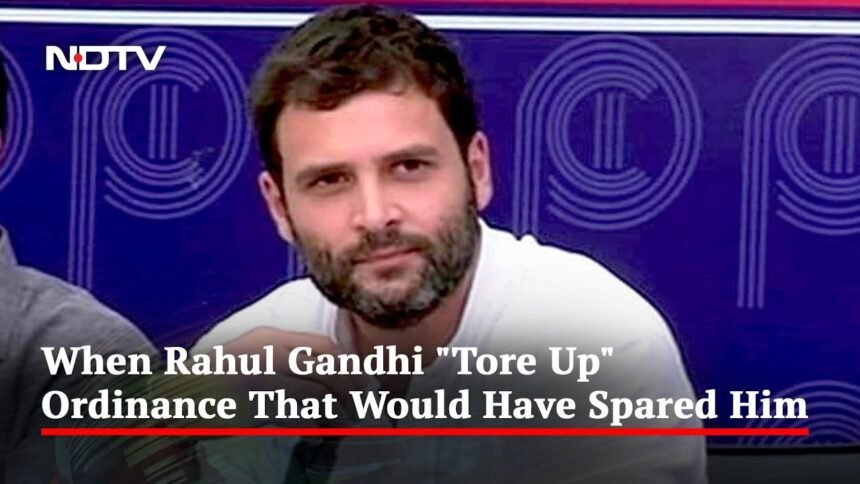The latest unveiling of a white paper by the Centre has revived recollections of a significant juncture in Indian political history: Rahul Gandhi’s striking tearing of an ordinance in 2013. This incident, which occurred during the tenure of the United Progressive Alliance (UPA) government, continues to be a subject of scrutiny and debate, symbolizing the complexities and controversies that often characterize governance and policymaking in the country.
The incident unfolded in September 2013 when Rahul Gandhi, then the Vice President of the Indian National Congress party, publicly criticized an ordinance brought by the UPA government to shield convicted lawmakers from disqualification. Gandhi’s unexpected and spontaneous act of tearing up a copy of the ordinance during a press conference sent shockwaves through the political establishment and sparked intense discussions about ethics, accountability, and the functioning of democratic institutions.
At the heart of the controversy was the issue of whether convicted politicians should be allowed to hold public office. The ordinance, which sought to amend the Representation of the People Act, of 1951, was widely perceived as an attempt by the government to circumvent a Supreme Court judgment that disqualified convicted lawmakers from continuing in office. Critics argued that the ordinance undermined the principles of accountability and integrity in public life, while supporters defended it as a pragmatic response to political exigencies.
Rahul Gandhi’s decision to publicly denounce the ordinance and tear up a copy of it was seen as a bold and unprecedented move. It was interpreted as a symbolic gesture aimed at distancing himself and his party from perceived wrongdoing and signaling a commitment to ethical governance. The incident also underscored the growing influence of social media and public opinion in shaping political discourse, as Gandhi’s action garnered widespread attention and sparked debates across the country.
The fallout from the ordinance-tearing incident was swift and far-reaching. In the aftermath, the UPA government faced widespread criticism and embarrassment, with many questioning its commitment to transparency and accountability. The controversy also strained relations between the Congress party and its coalition partners, leading to internal rifts and political turmoil.
Despite the initial backlash, Rahul Gandhi’s stance on the ordinance received praise from many quarters, who saw it as a principled stand against corruption and impunity. His actions resonated with a public increasingly disillusioned with the perceived lack of integrity in politics and governance. In subsequent years, the incident came to symbolize the Congress party’s efforts to rebrand itself as a champion of clean and accountable governance.
Fast forward to the present day, and the release of the Centre’s white paper has once again thrust the 2013 ordinance tearing incident into the spotlight. While the white paper ostensibly focuses on broader governance issues, its mention of Rahul Gandhi’s action serves as a reminder of the enduring legacy of that moment in Indian political history. It prompts reflections on the role of individuals in shaping policy decisions, the dynamics of power and accountability in democracy, and the evolving relationship between politics and public perception.
The incident of tearing up the 2013 ordinance remains a defining moment in India’s political narrative, symbolizing the complexities and challenges of governance in a vibrant and diverse democracy. As the country continues on its democratic journey, it is essential to heed the lessons of the past and strive for greater transparency, integrity, and accountability in public life.




